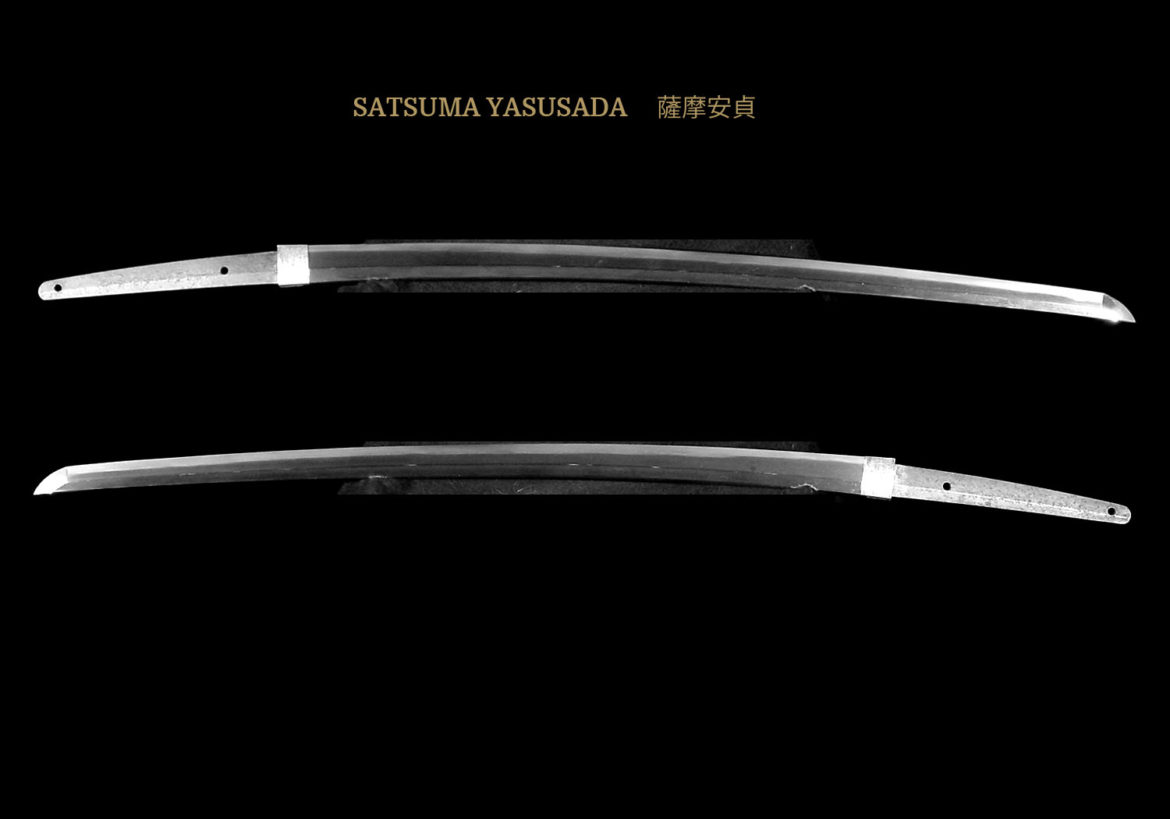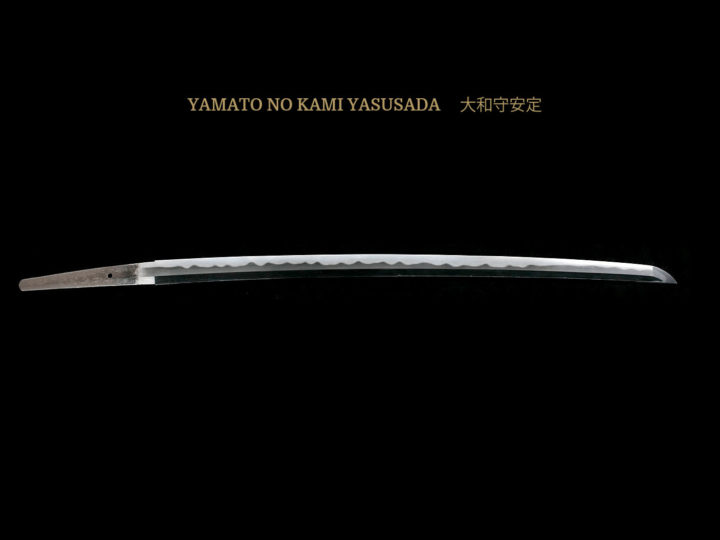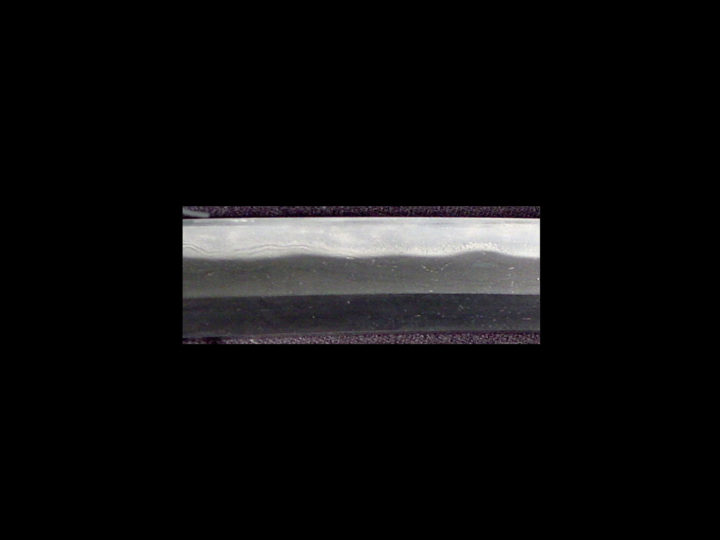
While swords were produced in the Satsuma Kuni from the Heian Jidai, they were primarily produced by katana kaji referred to as the so-called Naminohira (波の平) extended family. From the early Kamakura period, the Naminohira (波の平) sword makers prospered greatly and continued to produce swords into the Bakumatsu period. However, from the Keichô period (1596-16240 the evolution of swords produced in that Kuni changed dramatically. Around this period, Maruta Bingo no Kami Ujifusa (丸太備後守氏房), who was a member of the Mon of Mino no Kuni of Wakasa no Kami Ujifusa (若狭守氏房), moved to Satsuma and together with his son, Izu no Kami Masafusa (伊豆守正房), produced works in a style of the Mino den infused with Sôshû characteristics. There was abundant nie in both the ji and the ha. His pupils and others also adopted this style uniformly in this Kuni. Here, at long last, the work style seen since olden times changed and so arrived the creation of the so-called Satsuma shintô style.
Satsuma swords are noted for having a relatively uniform style of workmanship. They are also noted for the fact that this style of workmanship changed very little between the Shinto period and the Shinshinto period. Most Satsuma work tends to have a sturdy shinogi-zukuri construction, iori-mune and a shallow torii-zori. The kasane is thick and there is plenty of ha-niku. The hamon is billowing notare midare or wide suguha with small undulations consisting of thick nioi and nie accompanied with a bright nioi-guchi. There are traits such as ashi, yubashiri, and long kinsuji. The jihada is a dense ko-itame covered with profuse ji-nie, and most often have fine chikei running throughout the length of their swords. Many of these swords have the unique Satsuma sword characteristic where ji-nie appears in loose or larger hada formations giving the appearance of white chikei running throughout the ji and ha. This hada effect came to be called “imozuru” after the Satsuma sweet potatoes for which the region is known.
Yasusada (安貞) worked around the Tenna (天和, 1681-1684) in Satsuma Province. His given name was Nakamura Hyakuzaemon (中村百左衛門). He also had the first names Etsuemon (越右衛門) and Ippei (一平). He was born on May 26th in the fourth year of Keian (慶安, 1651). He was the third son of Nakamura Kiyosada (中村清貞). His first signature was Sanesada (真貞).
His lord, Kimotsuki Hisakane (肝付久兼 , 1641-1709), who was a retainer of the Satsuma fief, sent Yasusada (安貞) to study with the 57th generation Naminohira smith, Yamato no Kami Yasuyuki (大和守安行). Besides studying the workmanship of the Naminohira school, he studied the techniques of the Soshu tradition and received the honorary title of “Yamashiro no Daijô” (山城大掾) on August first of the seventh year of Hôei (宝永, 1710). Later, on December 12th of the first year of Shôtoku (正徳, 1711), his title was upgraded to “Yamashiro no Kami” (山城守). Since the kantei blade is signed with the “Yamashiro no Kami” (山城守) signature, we know that it was made after December 12, 1711 when he was about 62 years of age.
The Kimotsuki (肝付) family entrusted him with the revival of the Tamaki (玉置) family of swordsmiths that was one of the collateral branches of the Naminohira (波の平) school. At that time, he changed his name to Tamaki (玉置). He retired on March 15th of the sixth year of Shôtoku (正徳, 1716) and he died on September 13th of the second year of Kyôhô (享保, 1717) at the age of 67.
As one would expect with his Satsuma training, most of his blades exhibited typical Satsuma characteristics. While made some blades with a deep sori and a broad shinogi-ji, most were made with a shallow torii sori, more typical of the school. His jigane is dense and beautifully forged ko-itame with fine ji-nie. Sometimes o-hada and a rough ji-nie will be found in his blades. His hamon was hiro-suguha mixed with slightly undulating notare in nie-deki with a broad nioi-guchi, sunagashi, and imozuru. Rarely also an o-midare in ara-nie-deki is seen. His bôshi is broad, has a ko-maru-kaeri with a longish turn-back. Also hakikake and yakisume can be found on some blades.





